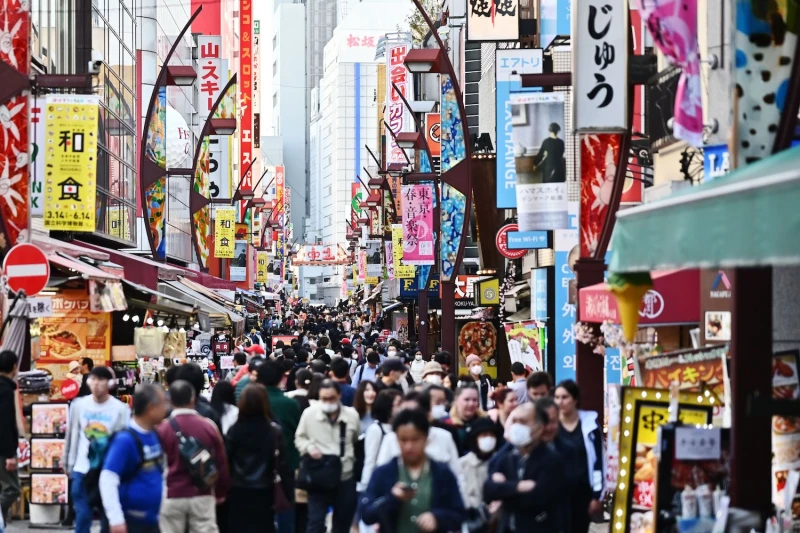Breaking: Prime Minister Kishida Approves Visa Free To Japan {See Commencement Date}
OpenLife Nigeria has gathered that, Japan, one of the most technologically developed countries in the world, will resume visa-free entry for individual travelers on October 11, 2022.
The Asia country Prime Minister, Fumio Kishida, announced Thursday in New York, bringing its border rules close to pre-pandemic norms for the first time in about two and a half years.
“We will remove the cap on the number of people entering the country, and will resume accepting individual travel and visa-free travel,” Kishida said.
At present Japan only allows package tours, and requires visas for all visitors, in an effort to control the spread of COVID-19.
Daily arrivals have been capped at 50,000. But this has made the country more and more of an outlier, as most other economies have fully reopened to tourists.
Starting on October 11, short-term visitors will no longer be required to apply for tourist visas. Before the pandemic, Japan allowed visa-free short-term travel from people from 68 countries and regions, such as Singapore, Malaysia, Thailand, Hong Kong and the U.S. And with no need to book tours through travel agencies, it will be easier to visit.
The Japanese government hopes to boost the economy through inbound tourism, taking advantage of the weak yen. The currency is hovering around 24-year lows, touching 145 per dollar at one point, which makes Japan a more attractive destination for international travelers.
Before COVID-19, Japan accepted a record 31.8 million visitors in 2019, making it one of the most popular destinations in Asia.
Thanks to its cultural resources and airport infrastructure, Japan ranked No. 1 on the World Economic Forum’s latest Travel & Tourism Development Index, released in May.
Japan is an island country in East Asia. It is situated in the northwest Pacific Ocean, and is bordered on the west by the Sea of Japan, while extending from the Sea of Okhotsk in the north toward the East China Sea, Philippine Sea, and Taiwan in the south.
Japan is a part of the Ring of Fire, and spans an archipelago of 6852 islands covering 377,975 square kilometers (145,937 sq mi); the five main islands are Hokkaido, Honshu (the “mainland”), Shikoku, Kyushu, and Okinawa. Tokyo is the nation’s capital and largest city, followed by Yokohama, Osaka, Nagoya, Sapporo, Fukuoka, Kobe, and Kyoto.
Japan is the eleventh most populous country in the world, as well as one of the most densely populated and urbanized.
About three-fourths of the country’s terrain is mountainous, concentrating its population of 125.5 million on narrow coastal plains. Japan is divided into 47 administrative prefectures and eight traditional regions. The Greater Tokyo Area is the most populous metropolitan area in the world, with more than 37.4 million residents.
Japan has been inhabited since the Upper Paleolithic period (30,000 BC), though the first written mention of the archipelago appears in a Chinese chronicle (the Book of Han) finished in the 2nd century AD.
Between the 4th and 9th centuries, the kingdoms of Japan became unified under an emperor and the imperial court based in Heian-kyō.
Beginning in the 12th century, political power was held by a series of military dictators (shōgun) and feudal lords (daimyō) and enforced by a class of warrior nobility (samurai). After a century-long period of civil war, the country was reunified in 1603 under the Tokugawa shogunate, which enacted an isolationist foreign policy. In 1854, a United States fleet forced Japan to open trade to the West, which led to the end of the shogunate and the restoration of imperial power in 1868.
In the Meiji period, the Empire of Japan adopted a Western-modeled constitution and pursued a program of industrialization and modernization. Amidst a rise in militarism and overseas colonization, Japan invaded China in 1937 and entered World War II as an Axis power in 1941. After suffering defeat in the Pacific War and two atomic bombings, Japan surrendered in 1945 and came under a seven-year Allied occupation, during which it adopted a new constitution and began a military alliance with the United States. Under the 1947 constitution, Japan has maintained a unitary parliamentary constitutional monarchy with a bicameral legislature, the National Diet.
Japan is a highly developed country, and a great power in global politics.
Its economy is the world’s third-largest by nominal GDP and the fourth-largest by PPP. Although Japan has renounced its right to declare war, the country maintains Self-Defense Forces that rank as one of the world’s strongest militaries.
After World War II, Japan experienced record growth in an economic miracle, becoming the second-largest economy in the world by 1972 but has stagnated since 1995 in what is referred to as the Lost Decades.
Japan has the world’s highest life expectancy, though it is experiencing a decline in population.
A global leader in the automotive, robotics and electronics industries, the country has made significant contributions to science and technology. The culture of Japan is well known around the world, including its art, cuisine, music, and popular culture, which encompasses prominent comic, animation and video game industries. It is a member of numerous international organizations, including the United Nations (since 1956), OECD, G20 and Group of Seven.






